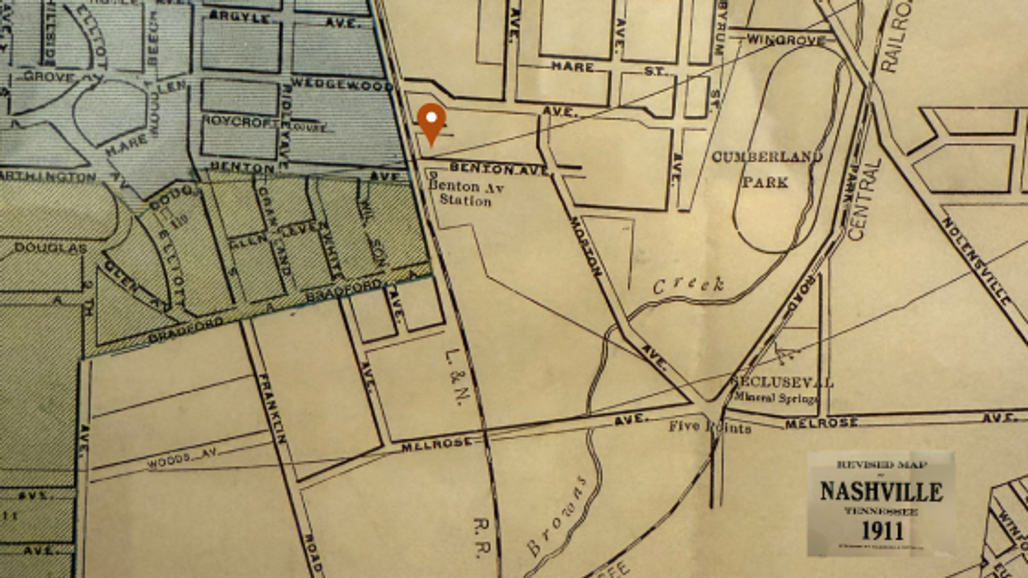
A Day in the Life: L&N Railroad at Benton Av Station
Posted by Sally Hendrick on Sep 3rd 2025
The Louisville & Nashville Railroad (L&N) was once a major lifeline for Nashville, both economically and socially. Founded in 1850, the L&N grew into one of the most important rail systems in the South, eventually stretching from the Gulf Coast to the Midwest. By the late 19th and early 20th centuries, it carried not just freight but thousands of passengers daily through Nashville, making the city a bustling hub for commerce, travel, and even wartime troop movements.
It’s 1912, and Clara Whitmore, a schoolteacher living outside Nashville, starts her morning early. She boils coffee on the wood stove, wraps a biscuit in a cloth napkin for the ride, and walks down the dirt lane to Benton Av Station. The sun is still low, painting the rails in streaks of gold.
Benton Av Station—named for the small community it served—was one of the rural stops along the L&N lines near Nashville. While not a grand depot like Union Station downtown, Benton Av Station played a vital role for surrounding farms and towns, acting as a pickup and drop-off point for goods, mail, and passengers. For locals, the sound of the train whistle echoing across the fields was a daily marker of time, almost like a public clock that kept life in rhythm.
She hears it before she sees it—a low rumble, a rhythmic click-clack. The L&N passenger train rounds the bend, steam billowing from the locomotive. The conductor tips his cap as she boards, tucking her fare into his leather change pouch. The wooden seats smell faintly of varnish and coal smoke, and the chatter of other commuters fills the car—farmers heading to the market, businessmen on their way to the city, mothers with children in tow.
As the train picks up speed, they pass rolling farmland, small towns, and the occasional waving figure at a crossing. By the time they pull into Nashville’s Union Station, the grand limestone arches and stained glass windows greet her like a cathedral of travel. Clara steps onto the bustling platform, where newsboys hawk papers, porters haul luggage, and the air smells of roasted peanuts from a vendor cart.

Castner Knott ad from 1898 when the store first opened.
She teaches her classes, shops for fabric at Castner-Knott Dry Goods Company on Church Street, and even stops for a soda at Elliston Place Pharmacy (turned soda shop in 1939) before returning to Union Station for the late afternoon train. On the ride home, the car is quieter—just the soft rattle of wheels and the occasional whistle. As Benton Av Station comes into view, Clara waves to the conductor, steps down onto the gravel, and walks home as twilight settles over the fields.
That was the rhythm of life for countless Nashvillians during the golden age of passenger rail—reliable, communal, and deeply woven into the fabric of daily living.
Today, we are on the move, taking our operations to the exact spot where Benton Av Station once sat on the L&N Railroad, just south of Wedgewood Avenue, east of I-65. We will have double the space and will create a permanent spot for the Graff Museum.
Follow us on social media for updates!
Clara Whitmore is a fictional character used to create a day in the life story of what a typical train ride into town could have looked like.
The Frog Conference Table features boxcar flooring for the top wooden panels with glass between to exhibit the railroad frog underneath.

